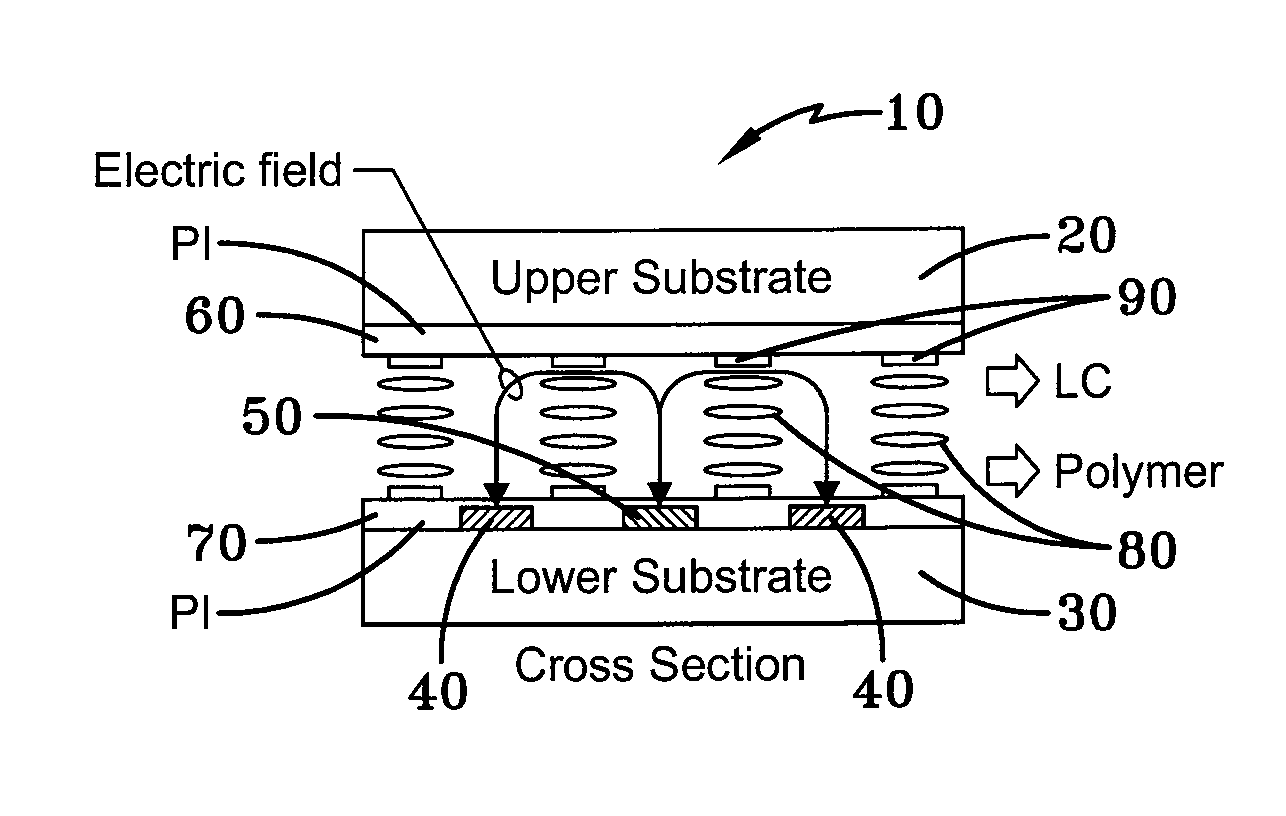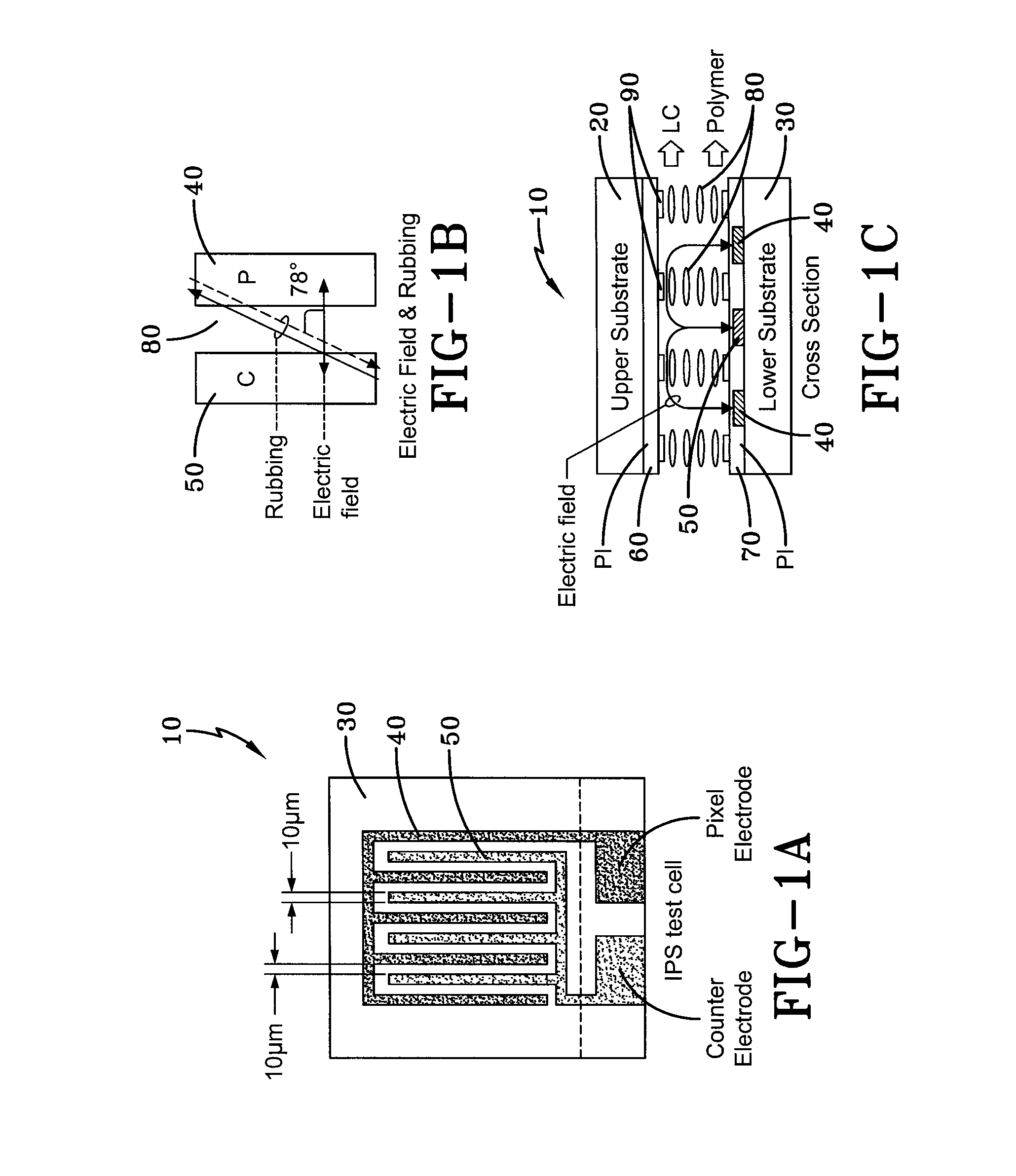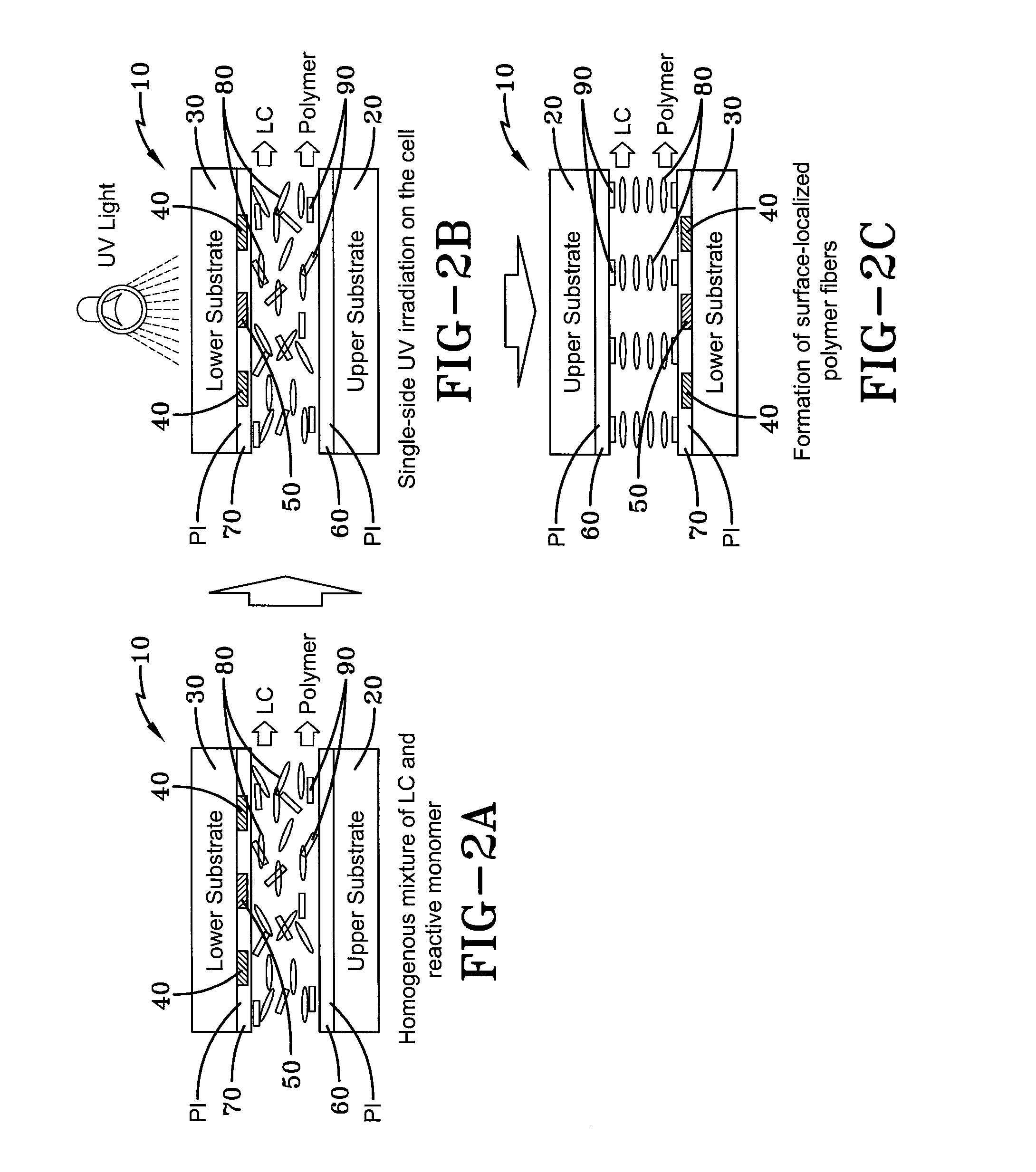Surface-stabilized ips LCD
- Summary
- Abstract
- Description
- Claims
- Application Information
AI Technical Summary
Benefits of technology
Problems solved by technology
Method used
Image
Examples
example 1
[0035]Specifically, the following example presents the testing results of the SS-IPS LCD cell 10 when placed between polarizers that are crossed at 90 degrees with respect to each other, whereby one polarizer is aligned with the average orientation of the nematic LC molecules that is the optical axis in the field-off state. When no electric field is applied, the SS-IPS LCD cell 10 that was placed between the crossed polarizers was viewed as dark. When an AC voltage (square wave) of 1 kHz was applied across the electrodes 40,50, the SS-IPS LCD cell 10 experienced an increase in light transmission and reached a maximum light transmittance at an applied voltage.
[0036]Continuing, FIG. 6 shows a plot or graph of the light transmittance as a function of applied voltage for both a standard IPS LCD cell with an LC mixture with 0% polymer (curve 100) and the SS-IPS LCD cell 10 of the present invention with the LC mixture 80 having a 0.2% (curve 110), 1% (curve 120), and 3% (curve 130) polyme...
example 2
[0039]In a second example, the SS-IPS LCD cell 10 of the present invention was constructed in the same manner as in example 1, with the exception that a voltage of 7VDC was applied to the cell 10 during the photopolymerization of the monomer of the LC material 80.
[0040]With a surface-localized polymer or polymer islands 90, the surface-anchoring characteristics of the liquid crystal molecules can be changed, depending on the density of the polymer islands 90. Morphological studies of the SS-IPS LCD cell 10 were carried out using a scanning electron microscope (SEM) in order to show that different electro-optical properties of the SS-IPS LCD cells 10 are caused by the polymer islands 90 or by structures formed at the surfaces of the samples. The results of the SEM analysis are shown in FIGS. 9a-c, whereby the Figs. show the SEM analysis of a 3% polymer SS-IPS LC cell 10 having polymer islands 90 that are grown on both surfaces of the substrates 20,30 with a preferential orientation d...
PUM
 Login to View More
Login to View More Abstract
Description
Claims
Application Information
 Login to View More
Login to View More - Generate Ideas
- Intellectual Property
- Life Sciences
- Materials
- Tech Scout
- Unparalleled Data Quality
- Higher Quality Content
- 60% Fewer Hallucinations
Browse by: Latest US Patents, China's latest patents, Technical Efficacy Thesaurus, Application Domain, Technology Topic, Popular Technical Reports.
© 2025 PatSnap. All rights reserved.Legal|Privacy policy|Modern Slavery Act Transparency Statement|Sitemap|About US| Contact US: help@patsnap.com



